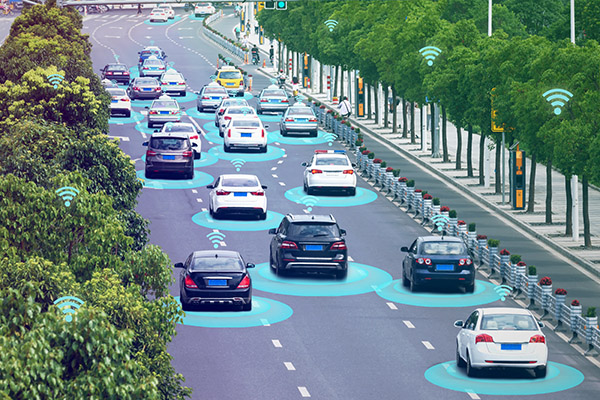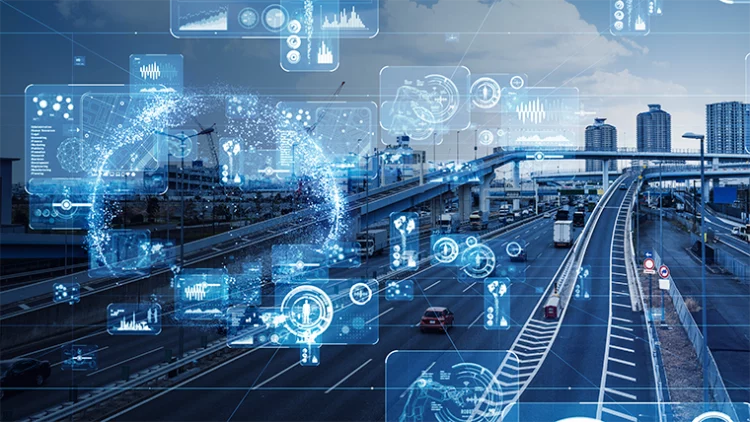Introduction: A New Era on the Move
For more than a century, the automobile has defined human mobility, reshaping cities, economies, and cultures. Yet, for all its transformative power, driving has remained a human endeavor—imperfect, unpredictable, and prone to error.
Now, a profound shift is underway. Self-driving cars, powered by artificial intelligence (AI), advanced sensors, and real-time data, are redefining what it means to move. This revolution is not simply about technology; it’s about changing how society interacts with transportation itself.
Autonomous driving represents the convergence of multiple innovations—machine learning, robotics, connectivity, and energy transformation. It promises to save lives, reduce congestion, empower the elderly and disabled, and reshape entire cities. But it also raises new challenges around safety, ethics, jobs, and trust.
This article explores how we got here, how autonomous vehicles work, and how they might change the future of mobility forever.
1. From Dream to Drive: The History of Autonomous Vehicles
1.1 Early Visionaries
The idea of self-driving cars predates modern computing. As early as the 1920s, inventors imagined “phantom cars” guided by radio waves or magnetic tracks.
In the 1980s, researchers at Carnegie Mellon University developed Navlab, one of the first robotic vehicles. Around the same time, Germany’s Bundeswehr University built VaMP, capable of autonomous highway driving at 100 km/h.
1.2 The DARPA Challenge
The real catalyst came from the U.S. Defense Advanced Research Projects Agency (DARPA).
In 2004, DARPA launched a $1 million challenge: create a robot vehicle that could navigate 240 km of desert terrain without human help. None succeeded that year, but by 2005, five vehicles finished the course. This moment marked the birth of modern autonomous driving research.
1.3 The Rise of Silicon Valley
By the 2010s, the world’s biggest tech firms joined in—Google (later Waymo), Tesla, Uber, Apple, and Baidu.
Machine learning, cheaper sensors, and cloud computing allowed cars to perceive, predict, and plan more effectively than ever.
What began as a military experiment has evolved into a civilian technology revolution shaping the future of transportation.
2. How Self-Driving Cars Work
Autonomous vehicles operate through a complex interplay of perception, decision-making, and control, all powered by data and algorithms.
2.1 The Five Levels of Autonomy
The Society of Automotive Engineers (SAE) defines five levels:
- Level 0 – No automation: full human control
- Level 1 – Driver assistance (e.g., cruise control, lane keep)
- Level 2 – Partial automation (hands off occasionally)
- Level 3 – Conditional automation (car drives, but human standby)
- Level 4 – High automation (self-driving in certain zones)
- Level 5 – Full automation (no steering wheel, no driver)
Most commercial systems today—like Tesla Autopilot or GM Super Cruise—operate between Levels 2 and 3.
2.2 The Sensory System: Eyes and Ears of the Machine
Autonomous vehicles “see” the world using:
- Cameras: Capture visual details, road signs, pedestrians
- Radar: Measures object speed and distance
- LiDAR (Light Detection and Ranging): Creates precise 3D maps of surroundings
- Ultrasonic Sensors: Detect close-range obstacles
- GPS and IMU: Determine global position and vehicle orientation
These systems work together to form a sensor fusion network, allowing the car to understand its environment with millimeter precision.
2.3 Artificial Intelligence and Decision-Making
At the heart lies AI—trained through deep neural networks.
AI interprets data from sensors, predicts movements of nearby objects, and decides optimal actions. For instance:
- Detect a pedestrian → predict motion → decide whether to brake or steer.
Over time, vehicles continuously improve through machine learning, using millions of driving miles to refine their models.
2.4 Control Systems
Once a decision is made, actuators translate it into motion:
- Steering, acceleration, braking—all managed electronically.
This process happens in milliseconds, faster than human reflexes, ensuring smoother and safer maneuvers.
3. Why Autonomous Driving Matters
3.1 Safety First
Each year, over 1.3 million people die in road accidents globally, with human error responsible for 90% of cases.
Autonomous vehicles promise dramatic reductions in fatalities by eliminating distractions, fatigue, and misjudgment.
3.2 Efficiency and Sustainability
Self-driving fleets can optimize routes, reduce fuel consumption, and support electric vehicle (EV) integration.
Platooning—vehicles driving close together—reduces air drag and energy use. Smart coordination also minimizes traffic jams and idle emissions.
3.3 Accessibility
For the elderly, disabled, or those unable to drive, autonomous vehicles offer newfound independence and mobility.
3.4 Economic Transformation
Entire industries—from logistics to insurance—will evolve.
Driverless delivery, robo-taxis, and freight automation could reshape urban economies and create new job categories in software, maintenance, and cybersecurity.
4. The Challenges on the Road Ahead
4.1 Safety Validation
Even if autonomous systems reduce accidents overall, every failure attracts scrutiny.
Testing requires billions of simulated miles to cover rare “edge cases”—unpredictable real-world events like kangaroos on highways or snow-covered lanes.
4.2 Ethical Dilemmas
When an accident is unavoidable, how should a car choose between two harms?
This “trolley problem” exposes the moral complexity of algorithmic decision-making. Should AI prioritize passenger safety or minimize total casualties?
4.3 Regulation and Liability
If a self-driving car crashes, who is responsible—the manufacturer, the software developer, or the owner?
Laws differ globally, and regulators struggle to keep up with technological pace.
4.4 Public Trust
Surveys show that many people remain uneasy about autonomous cars.
Trust grows only through transparency, safety records, and positive real-world experiences.
5. Real-World Progress
5.1 Waymo (U.S.)
Waymo operates fully driverless taxis in Phoenix and San Francisco. Its fleet has driven over 20 million miles autonomously on public roads.
5.2 Tesla
Tesla’s “Full Self-Driving” (FSD) uses camera-only vision and neural networks. While controversial, its continuous software updates make it one of the most data-rich platforms globally.
5.3 Baidu Apollo (China)
Baidu’s Apollo Go robo-taxis serve passengers in Beijing and Wuhan, supported by China’s strong 5G infrastructure and regulatory frameworks.
5.4 Cruise (General Motors)
Cruise operates late-night driverless taxis in major U.S. cities, focusing on safety validation and scalable deployment.

6. The Impact on Society and Urban Design
6.1 Redefining Cities
Autonomous vehicles could transform city layouts:
- Less need for parking → more green spaces
- Shared mobility → fewer private cars
- Coordinated fleets → reduced congestion
6.2 Shifting Ownership Models
Personal car ownership may decline, replaced by Mobility-as-a-Service (MaaS) models—pay-per-use transportation on demand.
6.3 Environmental Benefits
Integrated with electric mobility, self-driving fleets can significantly cut CO₂ emissions, contributing to sustainable cities.
7. Future Horizons
7.1 Connectivity: V2X Communication
Cars will talk to everything—other vehicles (V2V), infrastructure (V2I), and pedestrians (V2P).
This enables predictive driving, such as slowing down before traffic lights or avoiding collisions before they occur.
7.2 AI Evolution
Advances in reinforcement learning and quantum computing could enable vehicles to learn faster, react smarter, and collaborate seamlessly with one another.
7.3 Integration with Smart Cities
Autonomous mobility will merge with renewable energy grids, intelligent traffic lights, and digital twins—creating holistic urban ecosystems.
7.4 Beyond Roads
The same technologies driving cars will power drones, autonomous ships, and air taxis—ushering in a new age of interconnected mobility.
8. Balancing Progress and Responsibility
The road to autonomy is not simply technological—it’s ethical, social, and human.
Building a future where machines drive safely alongside humans requires transparency, inclusivity, and accountability.
Governments must craft adaptive regulations, industries must commit to safety-first design, and citizens must engage in open dialogue about trust and responsibility.
Conclusion: The Journey Ahead
Autonomous vehicles represent more than a technological leap—they signal a cultural transformation.
They challenge our notions of control, safety, and freedom. They promise cities that breathe easier, roads that flow smoother, and mobility that includes everyone.
But the journey is not over. Every algorithm, every test mile, and every ethical decision moves us closer to a world where mobility is intelligent, shared, and sustainable.
As we navigate this road to autonomy, one truth stands clear:
The future of driving isn’t about letting go of the wheel—it’s about redefining what it means to move forward.











































